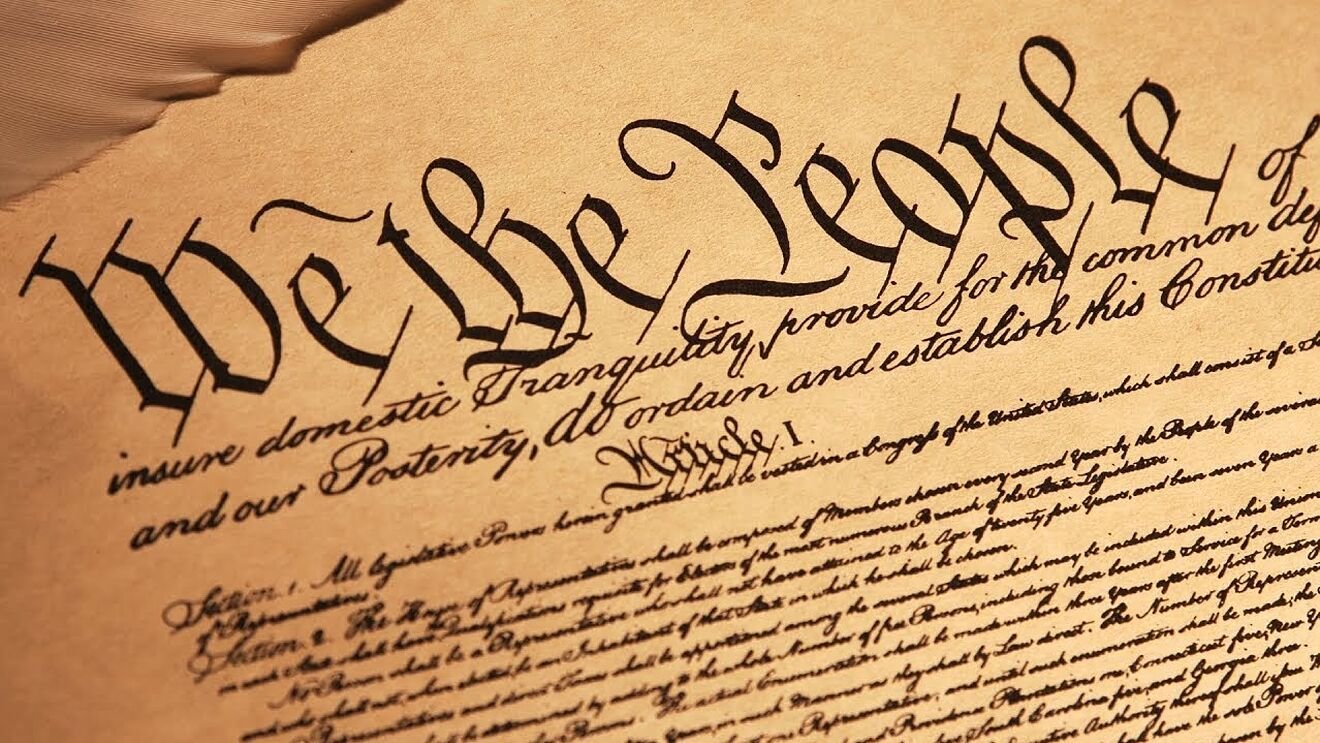Constitution Day Resources
On September 17, 1787 39 of the 55 Constitutional Convention delegates signed the newly drafted U.S. Constitution. Now a federal holiday recognized as Constitution Day, the date is used as an opportunity to highlight the uniqueness of the U.S. Constitution, appreciate the lives and work of the nation’s founders, and as a time to analyze the Constitution’s lasting impact.
In the classroom, educators can explore a variety of Constitutional resources with learners by reading primary sources, reviewing changes to the Constitution throughout American History, and analyzing historical arguments relating to the founding of the United States and the Constitution today.
Primary Sources Library from the Bill of Rights Institute
When teaching the Constitution, we want to offer students time in the classroom to analyze the text in-depth. The Bill of Rights Institute provides the full text of the Constitution of the United States, divided into multiple sections with discussion questions and additional context to drive classroom conversation. Students can also explore biographical information for several individuals whose ideas influenced the nation’s founding documents.
Constitution Political Cartoon activity from the National Archives
This fun activity has students connect sections of the Constitution to specific political cartoons from the early to mid 20th century. Students see how political cartoons have been used throughout history to provide commentary on historical events, how to recognize bias in different types of media messaging, and strategies for researching the context to fully understand the cartoons’ intended meaning.
The Federalist Papers (Accessed through the Library of Congress)
Video from Mineola Creative Content on YouTube.
Alexander Hamilton, James Madison, and John Jay penned the Federalist Papers as anonymous articles in New York newspapers from 1787-88. The letters were written to build public support for the newly developed Constitution. These essays outlined the division of government powers, methods for taxation, as well as foundations for the structure of Congress and the Courts. George Washington said that the papers “have thrown new lights upon the science of Government, they have given the rights of man a full and fair discussion, and have explained them in so clear and forcible a manner as cannot fail to make a lasting impression upon those who read the best publications of the subject, and particularly the pieces under the signature of Publius." Students reading the Federalist Papers will learn how proponents and opponents of the new Constitution argued their reasoning to the general public.
Prohibition and its Unintended Consequences from the Arkansas Center for Research in Economics
There are several key moments from U.S. History where the Constitution has been amended, meaning an addition or alteration to the original text was made. Since its ratification, the U.S. Constitution has been amended 27 times. Within the Prohibition and its Unintended Consequences lesson, students investigate the causes and unintentional effects of amending the Constitution to prohibit the production, sale, and consumption of alcohol. Students explore who supported and opposed the amendment, the ramifications of its passing, and why it was repealed thirteen years after implementation under the 21st amendment.
Image from iCivics Race to Ratify game.
Gamify the Classroom with iCivics
If you’re looking for online options for students, iCivics has developed multiple online games for teaching about the development of the Constitution and its specific enumerated rights. In Race to Ratify, the year is 1787, and students travel the colonies to learn how different individuals feel about the possibility of a new Constitution and system of government. In Do I Have a Right, students play a lawyer who must determine which clients have had their Constitutional rights violated and why, and win cases to grow their legal practice.
Connections to Arkansas Social Studies Standards:
Civics:
CPI.1.C.3 Analyze the rationale for the structure of the U.S. Constitution using a variety of primary and secondary sources
PD.4.C.1 Analyze historical documents and events that set the ideological foundations for the U.S. Constitution
PD.4.C.3 Examine the amendments to the U.S. Constitution in order to determine how the roles of citizens and the federal and state governments have changed over time
U.S. Government:
PP.2.USG.2 Analyze social, economic, and political factors that influenced the Founding Fathers to limit the powers of government
SC.3.USG.1 Analyze the underlying causes and events that led the Founding Fathers to replace the Articles of Confederation with the U.S. Constitution
SC.3.USG.5 Compare the arguments expressed in the debate over ratification of the U.S. Constitution



